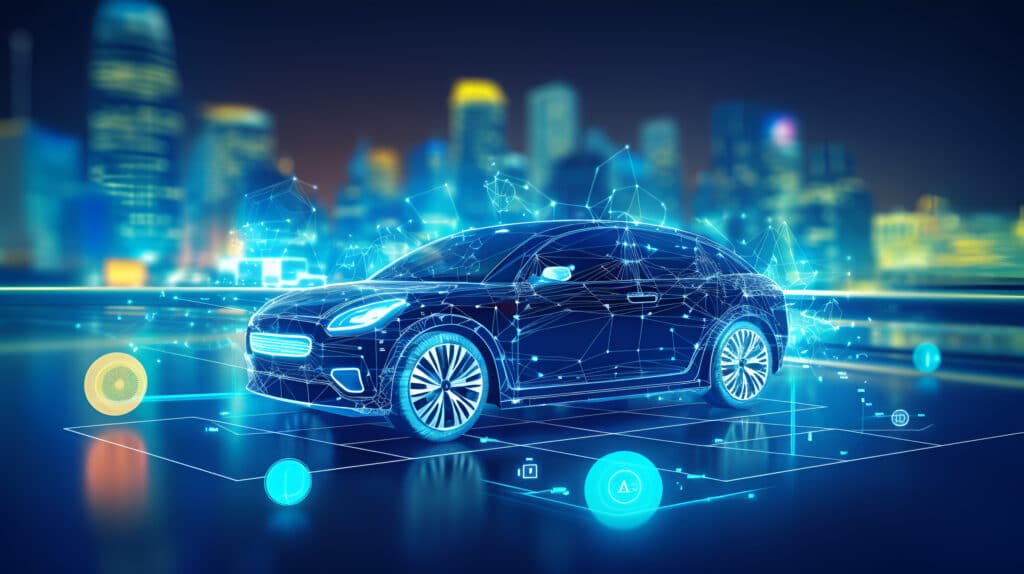Introduction
In the evolving landscape of automotive technology, connectivity and driver assistance systems stand at the forefront of innovations that are transforming the driving experience. These technologies are not just enhancing vehicle performance and passenger comfort, but are also pivotal in improving road safety and efficiency, marking a significant leap towards the future of autonomous driving.
Further Reading: The Hidden Power of Vehicle Telematics.
The Rise of Connectivity in Vehicles
Connectivity in vehicles, broadly referred to as Vehicle-to-Everything (V2X) communication, encompasses a wide range of technologies that allow vehicles to communicate with each other (V2V), with infrastructure (V2I), with pedestrians (V2P), and with the network (V2N). This interconnectedness is facilitated by the integration of advanced telecommunications systems, including 5G, Wi-Fi, Bluetooth, and dedicated short-range communications (DSRC).
The benefits of vehicle connectivity are manifold. It enables real-time traffic updates, optimising routes to reduce congestion and minimise travel times. Moreover, it allows for remote diagnostics and maintenance, enhancing vehicle longevity and safety. Connectivity also paves the way for advanced infotainment systems, providing a seamless and integrated user experience that blends navigation, entertainment, and vehicle management.
The Advancement of Driver Assistance Systems
Driver Assistance Systems (DAS) are technologies designed to augment the driver’s ability to operate the vehicle safely. These systems range from basic functionalities like Anti-lock Braking Systems (ABS) and Electronic Stability Control (ESC) to more sophisticated features such as Adaptive Cruise Control (ACC), Lane Keeping Assist (LKA), and Autonomous Emergency Braking (AEB).
One of the most significant impacts of DAS is the reduction in road accidents. By providing real-time feedback and interventions, these systems compensate for human error, which is a leading cause of traffic incidents. For instance, AEB can automatically apply brakes in critical situations, potentially avoiding collisions.
Furthermore, DAS technologies are essential stepping stones towards fully autonomous vehicles. Features like Tesla’s Autopilot and GM’s Super Cruise are already allowing hands-free driving on highways, showcasing the potential of these systems to revolutionise the concept of driving.
The Fusion of Connectivity and DAS: Towards Autonomous Driving
The integration of connectivity and DAS is creating vehicles that are not just automated but are intelligent entities capable of making decisions in real-time. This synergy is crucial for the development of autonomous vehicles, which rely on a complex network of sensors, cameras, radars, and artificial intelligence to navigate roads without human intervention.
This integration offers a glimpse into a future where traffic accidents are significantly reduced, if not eliminated. It promises a world where vehicles communicate with each other to optimise traffic flow, reduce emissions, and enhance road safety.
Challenges and Future Directions
Despite the promising advancements, the widespread adoption of connectivity and DAS faces challenges. These include concerns over cybersecurity, data privacy, and the need for significant investments in infrastructure. Additionally, regulatory frameworks need to evolve to accommodate these modern technologies and ensure their safe integration into society.
Looking ahead, the focus will be on enhancing the reliability and security of these systems, developing universal standards for vehicle communication, and ensuring equitable access to these technologies. As connectivity and driver assistance systems continue to evolve, they will undoubtedly play a pivotal role in shaping the future of mobility, making it safer, more efficient, and more enjoyable for all.
